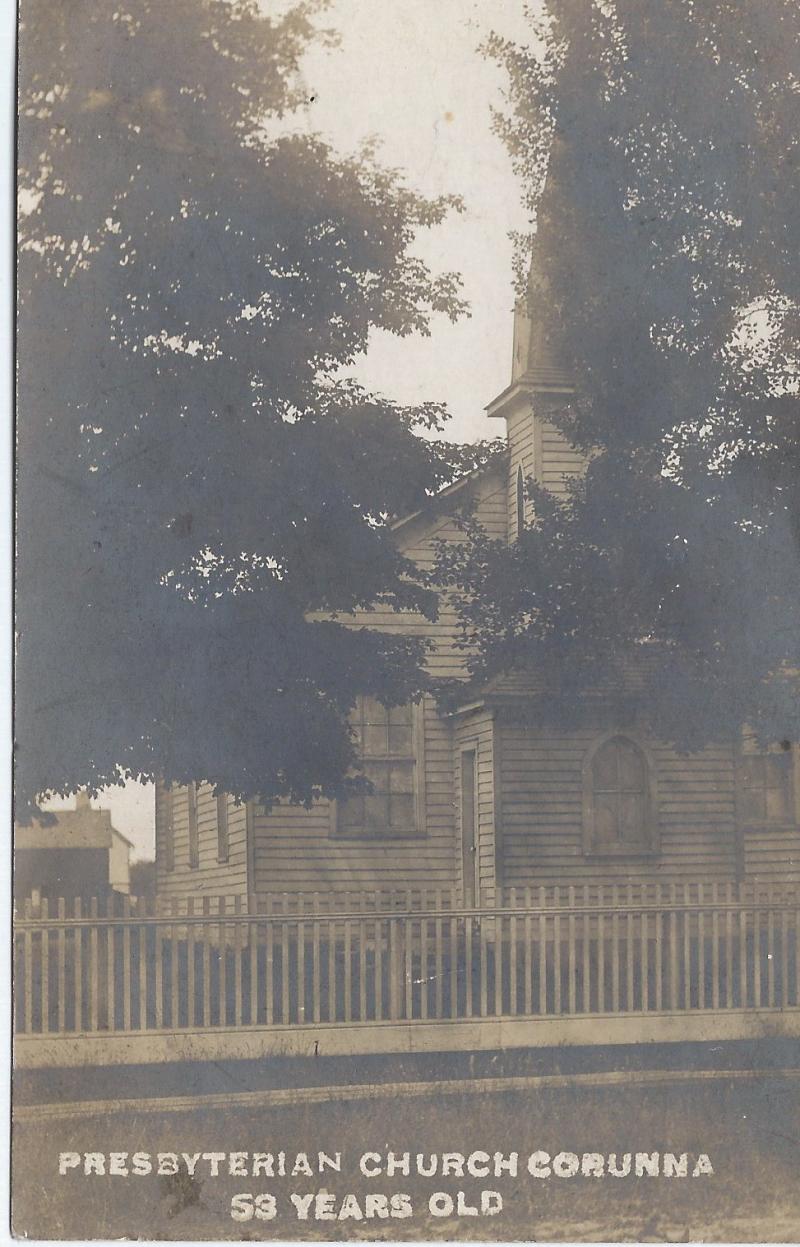
On March 2, 1854 a meeting was held at the home of John Farquarson. Much thought and planning was put into the idea of building a church. A decision was reached in favour of building the church. John Farquarson was chosen chairman. The committee was entitled to materialize their plans, and collect subscriptions. Committee members were: John Farquarson, Joseph Simpson, David (Daniel) McKay, John Scott, William Scott Sr. and Peter Scott Jr.
David McKay donated the land. It was on a slightly rising site on the north side of Hill Street.
People from surrounding areas regardless of religious denomination provided free labour and use of their oxen and horses. Two Roman Catholic Families – one of whom was Patrick Kane – also came and brought their team of oxen. Angus McBean of Bear Creek was the chief carpenter. His labour was all voluntary. The church was a white frame building with cedar shingles. Exactly twenty-one months later, on December 2, 1855 the church held its first services. Upon opening, the church seats were logs placed on blocks. Later, driving sheds for stabling buggies and horses were located behind the church.
The morning service was conducted by Rev. W. R. Sutherland from Ekfrid and the evening service was conducted by Rev. D. Walker. St. Andrews Presbyterian Corunna was the first congregation in the area to have a building of their own.
During the first year, the congregation depended on supply ministers. Mr. Gauld arrived and stayed until 1860. Evidence regarding the period following Mr. Gauld’s departure is not too plentiful. Church records were destroyed when a former minister was cleaning his house, and this has made the task of assembling records difficult.
In 1890 the church started to use an organ. However, Mr. McKutcheon was opposed to the use of any musical instruments during church services. James McKutcheon was always immaculately dressed in his black broadcloth and silk top hat.
Later, Mr. Donald Callum donated land for a manse. W. R. Adams of Hamilton, a graduate from Knox College, Toronto 1937, accepted a call as minister for Corunna Presbyterian Church, Courtright Church and Knox (8th line of Moore) Church.
During the 106 years that followed the opening, the building was adequate for the congregation. Gradually lamp light was replaced by gas lights, then to electricity. The drivesheds slowly disappeared. Renovations created a basement and a furnace was added. An organ and piano were installed but the structure of the white frame church remained the same.
St. Andrews congregation steadily increased, and in 1959 plans were established for building a larger brick church at the corner of Fane and Colborne streets that would be the new church. The little white church closed its doors and along with the property was sold to the Corunna United Church on January 29, 1961.
On July 31, 1960, sod was turned for the building of the second church. Mr. William Sim and Mrs. Etta Needham, both 91 years at the time, performed the ceremony. Mrs. Lillian Cruickshank laid the cornerstone for the present building on November 27, 1960. She was a long time active member of the congregation. Professor Allen L. Farris delivered the sermon during the dedication service on Sunday, February 26, 1961. Through the congregation’s hard work and numerous activities the mortgage was burned on December 12, 1976. The previous Hammond organ was sold and a new organ was installed costing $14,000. Within one year it was debt-free.
The number of elders increased slightly. In 1976 Miss Jean McClenaghan was elected the first women elder. Unfortunately Miss McClenaghan died suddenly that year.
The church was becoming small in comparison to the growing congregation and the heating system was less efficient and economical to operate. Chairs would be placed at the back of the church to accommodate everyone. Therefore, plans went ahead for enlarging the church when up-dating the existing facilities. An addition was started at the west end of the church to enlarge the sanctuary and basement area totaling $72,000. Construction began June 1979. Many members of the congregation again volunteered their time and services.
Church members participated in a bond subscription which enabled the church to borrow money from them at a lower rate than the bank’s current interest rate. The church interior was insulated and paneled and a red carpet was laid down the centre aisle. Generous renovations and redecorations were applied to the basement also.
As of 2020, the church continues to hold services at the 437 Colborne Drive location. The church is also involved in a number of initiatives that benefit the community, including a food bank, cooking classes, nutritious snack programs at the local elementary school and summer Vacation Bible School.

